The Hollywood Revue of 1929 (1929)
DIRECTED BY: Charles Reisner
NOMINATED FOR: Best Picture
I don't normally look at films I haven't seen in full. My excuse is that The Hollywood Revue of 1929 is not a film, it's a television special in the days before television.
All this "film" is is a collection of sketches performed on a stage by then-famous Hollywood stars. There's no narrative, no story, just some comedy bits and some singing, stretched out to two hours. You could randomly shuffle the sketches up and still come out with the same movie.
And that doesn't offer anything worth talking about. I guess it gave the people the same kind of Seeing Famous People Do Stuff thrill that we now get from Dancing With the Stars and such shows, but if you really need that kind of thrill, you probably have nothing to do with this blog.
Since there's no substance to speak of, I'll just post the available clips on Youtube and show you what was entertainment in 1929:
Host Jack Benny getting his clothes torn off by William Haines...
Marie Dressler having a royal fantasy...
Buster Keaton dancing in drag...
Laurel & Hardy doing magic, kinda (my personal favorite bit from those I've seen)...
John Gilbert & Norma Shearer doing a classic scene from Romeo & Juliet (IN COLOR!)...
And them again, doing a more up to date scene from Romeo & Juliet (IN COLOR!)...
And to close things out, the entire cast performing "Singing in the Rain," which I should point out debuted with this film.
No, I have no desire to hunt the rest of the film down. What's the point? It's mostly Hollywood patting itself on the back, and I already get enough of that with the Academy Awards.
Sunday, May 24, 2009
Saturday, May 23, 2009
Warner Baxter and In Old Arizona
In Old Arizona (1928)
DIRECTED BY: Irving Cummings
STARRING: Warner Baxter, Edmund Lowe, Dorothy Burgess
WON: Best Actor (Warner Baxter)
NOMINATED FOR: Best Cinematography (Arthur Edeson)
Best Director (Irving Cummings)
Best Writing, Achievement (Tom Barry)
Best Picture
There was a reason the early sound films were called "talkies." Most shoots were limited to a single microphone, and that was usually reserved for the dialogue. It was hard to pick up sounds that weren't within a few feet of it, so films were enclosed on sets to allow for easier sound pick-up.
This is what gives In Old Arizona it's claim to fame: Along with being the first sound western, it's the first sound film that largely takes place outdoors.

Unfortunately, this isn't as big of a deal as it sounds. The microphones barely picked up anything beyond a few feet, so for a ten second shot of a man riding a horse, you might hear the hoof beats for about two seconds, followed by eight seconds of total silence. More minor sounds that would create atmosphere, like the wind, weren't picked up.
The locations in Arizona were certianly photogenic, but with such weak sound sources, it would have been a lot more satisfying to just give the non-dialogue portions of the film to a foley artist. Not that there's a lot of those. This is a "talkie," and it earns that title. This film will NOT SHUT UP! It's wall-to-wall boring conversations between three bad actors, and it's enough to drive you bonkers.
Let's start with Baxter.
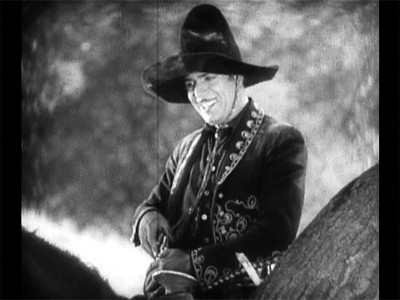
Warner Baxter, who won the Academy Award for acting somehow, plays the Cisco Kid, #1 outlaw of the west, and oversized hat connoisseur! This is my first film with Warner Baxter, and I'm not sure what his acting strengths are (or if he even has any). He's never allowed to physically act throughout the entire film, he just stands there with a smile and reads off his lines.
And he keeps talking, and talking, AND TALKING. He never stops talking. There are a lot of scenes where he's alone, and he just talks to himself. He sees a wanted poster for him, and he laughs and gives a monologue about how awesome he is. He monologues about everything: about how awesome his girl is, about how awesome babies are (seriously), about how awesome his wine is, etc.
And despite all this talking-and-nothing-else, Warner Baxter isn't very good at it. Maybe it's his faux-Mexican accent (even though the character is Portuguese, figure that one out). Maybe Baxter couldn't play young (the character was 25 and Baxter was 39). Maybe he just couldn't get over how goofy and large his hat was.
In any case, Baxter was bad, and the Cisco Kid was uninteresting. The description of the film I read compared the Cisco Kid to a wild west version of Robin Hood, which is nothing but a complete misunderstanding on what Robin Hood was about. Robin Hood didn't just "steal from the rich and gave to the poor," he fought a corrupt government that squeezed money unfairly from it's citizens. The Cisco Kid just stole stuff.

The opening of the film shows the Cisco Kid stealing a box of money from a carriage, and then leaving. The people the Kid steals from aren't rich or corrupt or anything, they were just passing through, and the Kid never has any intention though the film to do anything with the money but buy things for him and his girl. What an asshole.
It should be noted that in this classic western story of law makers and law breakers, there's hardly any action in it. The carriage stickup is just the Cisco Kid pointing a gun at a few people, them giving him the money, and him leaving. No shots fired, no hasty escapes, just routine.

There's only one scene in the movie that would qualify as an action scene. About two-thirds of the way through, three random guys spot the Cisco Kid and try to take him down for the reward on his head, but the Cisco Kid makes quick work of them. It's a quick moment, shot from a distance, and has nothing to do with what little plot there is in the film. So, with those two short moments out of the way, what left for the remaining 60+ minutes of film?
Talking, talking, talking, talking, TALKING.
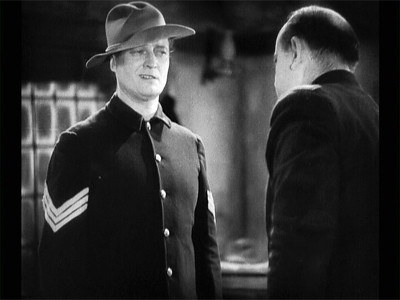
And then we have Edmund Lowe and his character Sgt. Dunn. Despite being the Cisco Kid's main foil, Dunn comes off even worse of a character. He's a gambler and a womanizer who cheats on his wife, and he's only really after the Kid for the money, not because it's the right thing to do. The main problem with this is that Edmund Lowe must not have gotten the memo and thought he was playing the good guy, because despite what this character does, Lowe always plays the character as an aw-shucks-boy scout that ends every sentence with "geez".
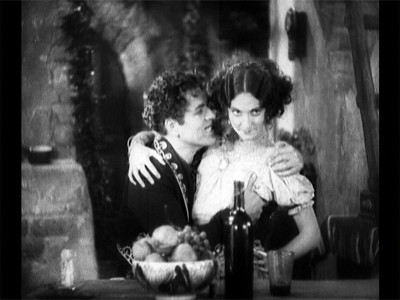
And then we have Dorothy Burgess and her character, the feisty Mexican Tonia Maria. Tonia is a gold digger, and sleeps with other men behind the Kid's back. She's easily the least-likable character in the film, and it doesn't help that Burgess' performance is damn near racist.
Eventually, Tonia gets with Dunn, and we realize that the only reason we're even rooting for the Cisco Kid, a selfish bandit, is because everybody else is WORSE. What we end up with is an hour and a half film where three totally unlikeable characters do nothing but talk to each other about nothing, all while being played by three bad actors. This is what Hollywood wanted to pretend was entertainment back then.
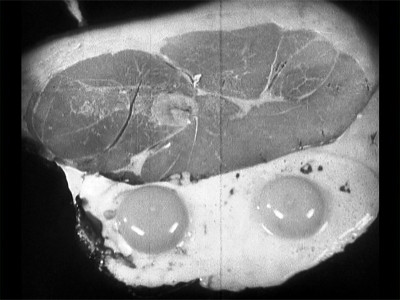
DIRECTED BY: Irving Cummings
STARRING: Warner Baxter, Edmund Lowe, Dorothy Burgess
WON: Best Actor (Warner Baxter)
NOMINATED FOR: Best Cinematography (Arthur Edeson)
Best Director (Irving Cummings)
Best Writing, Achievement (Tom Barry)
Best Picture
There was a reason the early sound films were called "talkies." Most shoots were limited to a single microphone, and that was usually reserved for the dialogue. It was hard to pick up sounds that weren't within a few feet of it, so films were enclosed on sets to allow for easier sound pick-up.
This is what gives In Old Arizona it's claim to fame: Along with being the first sound western, it's the first sound film that largely takes place outdoors.

Unfortunately, this isn't as big of a deal as it sounds. The microphones barely picked up anything beyond a few feet, so for a ten second shot of a man riding a horse, you might hear the hoof beats for about two seconds, followed by eight seconds of total silence. More minor sounds that would create atmosphere, like the wind, weren't picked up.
The locations in Arizona were certianly photogenic, but with such weak sound sources, it would have been a lot more satisfying to just give the non-dialogue portions of the film to a foley artist. Not that there's a lot of those. This is a "talkie," and it earns that title. This film will NOT SHUT UP! It's wall-to-wall boring conversations between three bad actors, and it's enough to drive you bonkers.
Let's start with Baxter.

Warner Baxter, who won the Academy Award for acting somehow, plays the Cisco Kid, #1 outlaw of the west, and oversized hat connoisseur! This is my first film with Warner Baxter, and I'm not sure what his acting strengths are (or if he even has any). He's never allowed to physically act throughout the entire film, he just stands there with a smile and reads off his lines.
And he keeps talking, and talking, AND TALKING. He never stops talking. There are a lot of scenes where he's alone, and he just talks to himself. He sees a wanted poster for him, and he laughs and gives a monologue about how awesome he is. He monologues about everything: about how awesome his girl is, about how awesome babies are (seriously), about how awesome his wine is, etc.
And despite all this talking-and-nothing-else, Warner Baxter isn't very good at it. Maybe it's his faux-Mexican accent (even though the character is Portuguese, figure that one out). Maybe Baxter couldn't play young (the character was 25 and Baxter was 39). Maybe he just couldn't get over how goofy and large his hat was.
In any case, Baxter was bad, and the Cisco Kid was uninteresting. The description of the film I read compared the Cisco Kid to a wild west version of Robin Hood, which is nothing but a complete misunderstanding on what Robin Hood was about. Robin Hood didn't just "steal from the rich and gave to the poor," he fought a corrupt government that squeezed money unfairly from it's citizens. The Cisco Kid just stole stuff.

The opening of the film shows the Cisco Kid stealing a box of money from a carriage, and then leaving. The people the Kid steals from aren't rich or corrupt or anything, they were just passing through, and the Kid never has any intention though the film to do anything with the money but buy things for him and his girl. What an asshole.
It should be noted that in this classic western story of law makers and law breakers, there's hardly any action in it. The carriage stickup is just the Cisco Kid pointing a gun at a few people, them giving him the money, and him leaving. No shots fired, no hasty escapes, just routine.

There's only one scene in the movie that would qualify as an action scene. About two-thirds of the way through, three random guys spot the Cisco Kid and try to take him down for the reward on his head, but the Cisco Kid makes quick work of them. It's a quick moment, shot from a distance, and has nothing to do with what little plot there is in the film. So, with those two short moments out of the way, what left for the remaining 60+ minutes of film?
Talking, talking, talking, talking, TALKING.

And then we have Edmund Lowe and his character Sgt. Dunn. Despite being the Cisco Kid's main foil, Dunn comes off even worse of a character. He's a gambler and a womanizer who cheats on his wife, and he's only really after the Kid for the money, not because it's the right thing to do. The main problem with this is that Edmund Lowe must not have gotten the memo and thought he was playing the good guy, because despite what this character does, Lowe always plays the character as an aw-shucks-boy scout that ends every sentence with "geez".

And then we have Dorothy Burgess and her character, the feisty Mexican Tonia Maria. Tonia is a gold digger, and sleeps with other men behind the Kid's back. She's easily the least-likable character in the film, and it doesn't help that Burgess' performance is damn near racist.
Eventually, Tonia gets with Dunn, and we realize that the only reason we're even rooting for the Cisco Kid, a selfish bandit, is because everybody else is WORSE. What we end up with is an hour and a half film where three totally unlikeable characters do nothing but talk to each other about nothing, all while being played by three bad actors. This is what Hollywood wanted to pretend was entertainment back then.

Sunday, May 17, 2009
Roland West and Alibi
Finally! An interesting movie!
Alibi (1929)
DIRECTED BY: Roland West
STARRING: Chester Morris, Harry Stubbs, Mae Busch
NOMINATED FOR: Best Actor in a Leading Role (Chester Morris)
Best Art Direction (William Cameron Menzies)
Best Picture
It's kind of heartwarming to discover that SOMEBODY was trying to use sound artistically this early in it's history. Most sound films at the time were just stationary cameras filming people talking. Sound was just that, sound. A gunshot was a gunshot, a footstep was a footstep, and a scream was a scream. There was very few attempts to bring symbolization into sound this early in the game.
Alibi is a dated, creaky film now, but put into context, and it's pretty amazing. The very opening scene is a montage of simple sounds. A prison guard twirls his baton, creating a beat.
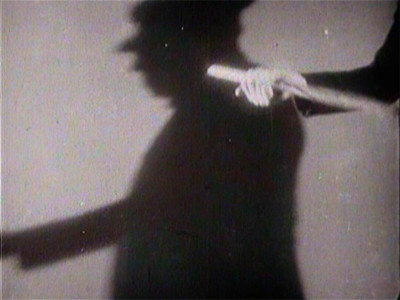
A bell is rung to the same beat.
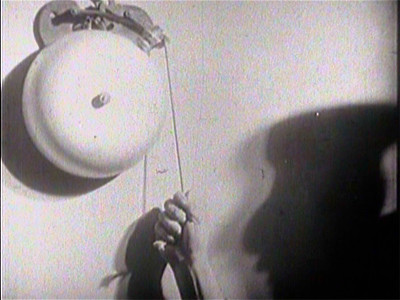
Prisoners drag their feet.

Another prison guard beats his baton against a wall.
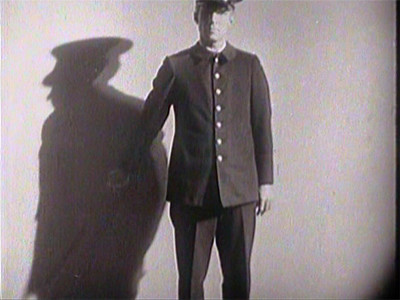
This is the earliest musical moment I've seen in sound pictures. The film is not a musical, but the simple beat and the poetic images suggest the opening moments of a modern music video. Most musicals at that time were simply Broadway performances put in front of a camera, usually involving dancing girls with glittery costumes.
Alibi has those too, though.
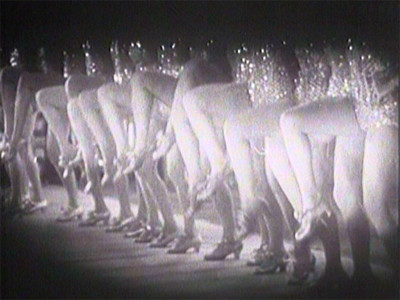
This is the main problem with Alibi, it has split personalities. The film was originally conceived as a silent film, but the success of talkies forced director Roland West to transform it into a sound film.
What we end up with is a film where half the scenes are like the one at the beginning, filmed silent with sound dubbed in later, and the other half falling into the same claptrap of all the other early sound films, with glittery flow-stopping musical numbers and people standing in rooms talking while the camera doesn't move.
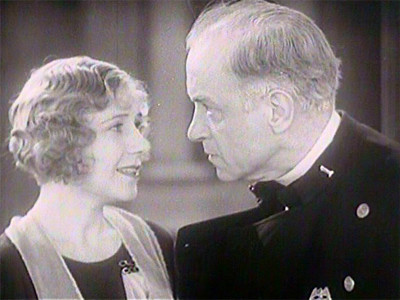
The plot is at least interesting, so we have that to get us through the exposition scenes. The film revolves around the relationship between ex-con Chick Williams and the police. For the first half of the film, we learn that the police planted a gun on Chick which resulted in him going to prison. When Chick gets out, he connects with the daughter of the police sergeant that framed him, much to the father's dismay.
If the film has anything to say, it's that, sure, criminals are bad, but the police are not much better. Chick's framing is the big off-screen example of the police's questionable tactics, but that's not enough for us. We have to see these guys do their dirty laundry themselves.
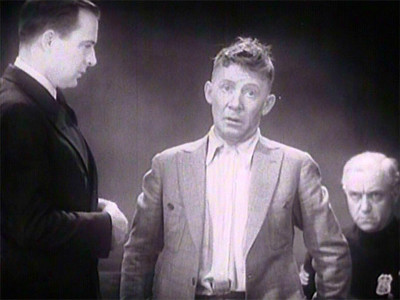
During a heist, a police officer is shot, and the police are going to get answers no matter what. They bring in a two-bit thug and start questioning him, demanding a name out of him even though he claims an alibi.
This scene is my favorite in the entire film. Roland West did a lot of experimenting with sound in the film, and he may have been one of the first directors to discover that with sound comes silence. Silent films never had the luxury of silence, with live music always being played. With a sound film, when the sound goes away, you pay attention, you get tense. So, when a mysterious face appears in a door...
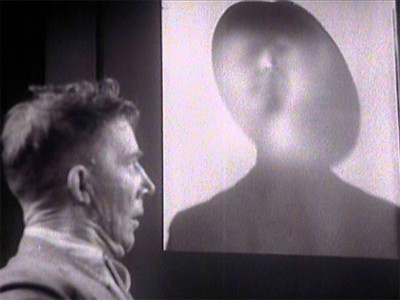
...and one officer goes to stand by the window...

...and the other officer wipes the fingerprints off a gun...
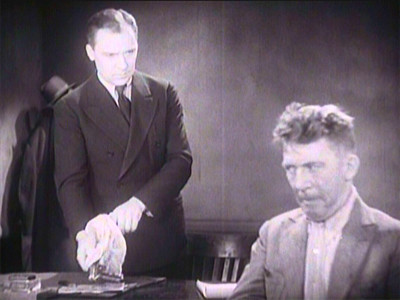
...and there's no sound to explain it all, no sound to comfort you, then your heart really starts to race.
It's amazing how hopeful I get when I see someone trying to regain the artistic freedom lost by technology. As CGI continues to take over films, I hope we get more and more directors who try and implement it in new and artistic ways.
Again, the film is still a mixed bag, and that goes for it's other elements. It was nominated for it's art direction by our old friend William Cameron Menzies. Some descriptions of the film has dubbed it "inspired by German expressionism," but I don't agree. However, the slightly off-beat art deco is something to enjoy.
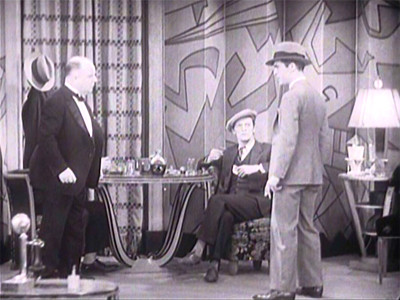
So while Menzies' production design is a hit, the acting is a big, big miss. It seems most of the actors involved were still suffering from the jitters of converting to silent style to talkie style. Chester Morris, nominated for Best Actor for his role as Chick Williams, always seems like he's trying to squeeze his skull out of his head.
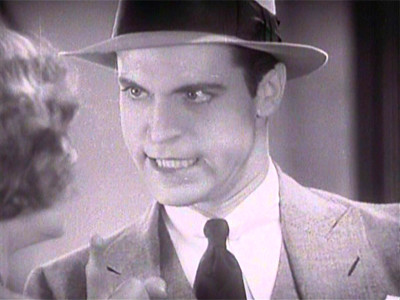
However, the worst offender is Regis Toomey, playing an undercover detective named Danny McGann. His cover? Drunken Wall Street broker.
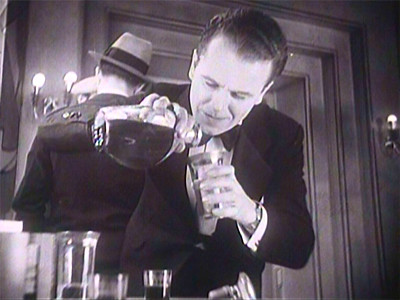
Danny's drunk character is so over the top it's laughable. At first I thought the character of Danny was a bad actor, but when Danny's cover is blown and we see the real character, I realized that it was Regis that was the bad actor. Every scene with Danny is sooooo drawn out and annoying, and it makes sense that his most drawn out and annoying scene is when he dies.
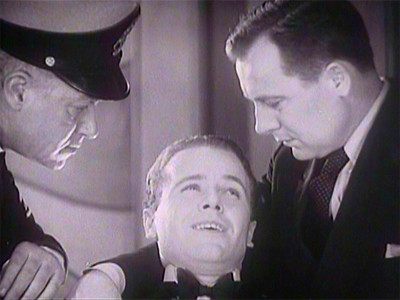
It takes minutes for him to finally go. He tells everyone his regrets, makes his finally wishes, etc., all with twenty second pauses between each line. And finally, right before he dies, UKULELE MUSIC STARTS PLAYING! What is this crap!?!
*sigh* Such is the nature of this film. If you want the good, you got to take the bad. It's certainly the best film from the 2nd Academy Awards I've looked at so far, and in this sea of dead weights, you take what you can get.
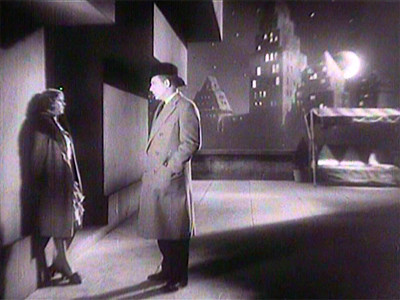
Alibi (1929)
DIRECTED BY: Roland West
STARRING: Chester Morris, Harry Stubbs, Mae Busch
NOMINATED FOR: Best Actor in a Leading Role (Chester Morris)
Best Art Direction (William Cameron Menzies)
Best Picture
It's kind of heartwarming to discover that SOMEBODY was trying to use sound artistically this early in it's history. Most sound films at the time were just stationary cameras filming people talking. Sound was just that, sound. A gunshot was a gunshot, a footstep was a footstep, and a scream was a scream. There was very few attempts to bring symbolization into sound this early in the game.
Alibi is a dated, creaky film now, but put into context, and it's pretty amazing. The very opening scene is a montage of simple sounds. A prison guard twirls his baton, creating a beat.

A bell is rung to the same beat.

Prisoners drag their feet.

Another prison guard beats his baton against a wall.

This is the earliest musical moment I've seen in sound pictures. The film is not a musical, but the simple beat and the poetic images suggest the opening moments of a modern music video. Most musicals at that time were simply Broadway performances put in front of a camera, usually involving dancing girls with glittery costumes.
Alibi has those too, though.

This is the main problem with Alibi, it has split personalities. The film was originally conceived as a silent film, but the success of talkies forced director Roland West to transform it into a sound film.
What we end up with is a film where half the scenes are like the one at the beginning, filmed silent with sound dubbed in later, and the other half falling into the same claptrap of all the other early sound films, with glittery flow-stopping musical numbers and people standing in rooms talking while the camera doesn't move.

The plot is at least interesting, so we have that to get us through the exposition scenes. The film revolves around the relationship between ex-con Chick Williams and the police. For the first half of the film, we learn that the police planted a gun on Chick which resulted in him going to prison. When Chick gets out, he connects with the daughter of the police sergeant that framed him, much to the father's dismay.
If the film has anything to say, it's that, sure, criminals are bad, but the police are not much better. Chick's framing is the big off-screen example of the police's questionable tactics, but that's not enough for us. We have to see these guys do their dirty laundry themselves.

During a heist, a police officer is shot, and the police are going to get answers no matter what. They bring in a two-bit thug and start questioning him, demanding a name out of him even though he claims an alibi.
This scene is my favorite in the entire film. Roland West did a lot of experimenting with sound in the film, and he may have been one of the first directors to discover that with sound comes silence. Silent films never had the luxury of silence, with live music always being played. With a sound film, when the sound goes away, you pay attention, you get tense. So, when a mysterious face appears in a door...

...and one officer goes to stand by the window...

...and the other officer wipes the fingerprints off a gun...

...and there's no sound to explain it all, no sound to comfort you, then your heart really starts to race.
It's amazing how hopeful I get when I see someone trying to regain the artistic freedom lost by technology. As CGI continues to take over films, I hope we get more and more directors who try and implement it in new and artistic ways.
Again, the film is still a mixed bag, and that goes for it's other elements. It was nominated for it's art direction by our old friend William Cameron Menzies. Some descriptions of the film has dubbed it "inspired by German expressionism," but I don't agree. However, the slightly off-beat art deco is something to enjoy.

So while Menzies' production design is a hit, the acting is a big, big miss. It seems most of the actors involved were still suffering from the jitters of converting to silent style to talkie style. Chester Morris, nominated for Best Actor for his role as Chick Williams, always seems like he's trying to squeeze his skull out of his head.

However, the worst offender is Regis Toomey, playing an undercover detective named Danny McGann. His cover? Drunken Wall Street broker.

Danny's drunk character is so over the top it's laughable. At first I thought the character of Danny was a bad actor, but when Danny's cover is blown and we see the real character, I realized that it was Regis that was the bad actor. Every scene with Danny is sooooo drawn out and annoying, and it makes sense that his most drawn out and annoying scene is when he dies.

It takes minutes for him to finally go. He tells everyone his regrets, makes his finally wishes, etc., all with twenty second pauses between each line. And finally, right before he dies, UKULELE MUSIC STARTS PLAYING! What is this crap!?!
*sigh* Such is the nature of this film. If you want the good, you got to take the bad. It's certainly the best film from the 2nd Academy Awards I've looked at so far, and in this sea of dead weights, you take what you can get.

Tuesday, May 12, 2009
Mary Pickford and Coquette
Coquette (1929)
DIRECTED BY: Sam Taylor
STARRING: Mary Pickford, Johnny Mack Brown, Matt Moore
WON: Best Actress in a Leading Role (Mary Pickford)
I have to admit, I really miss the 1st Academy Awards. There was the questionable win and nomination here and there, but for the most part the films were interesting and deserved the accolades they received.
However, it took merely a year for the Academy to fall into controversy. That year, the award for Best Actress was expected to go to Ruth Chatterton for her role in Madame X (a film I sadly haven't been able to find). Instead, it went to Mary Pickford for Coquette. Why the controversy? Two reasons:
1) Mary Pickford was arguable the most powerful woman in Hollywood at the time. She began starring in movies in the 1910s, starring in 52 of them overall. Her youthful appearance and trademark curly hair made her on of the biggest stars of the silent era. Some say there was a point where she was more famous then Chaplin. Appearances in public were known to cause riots. One of her curls sold for $15,000 in auction. She was a superstar.
And she used that superstar status to change the film industry from the inside. She became her own producer after three years of starring in films. Pickford's films were distributed through their own distribution unit. In 1919, she founded her own studio, United Artists, along with Chaplin, director D.W. Griffith and soon-to-be husband Douglas Fairbanks Sr. The company became a much-needed home for independent film producers at the time.
And most importantly, she was one of the founders of the Academy of Motion Picture Arts and Sciences, the group behind the Academy Awards. She was the only female member at the time, and even if Pickford HAD given the best performance that year, people would still have cried favoritism.
2) Mary Pickford did not give the best performance that year. Coquette is an awful, awful film.
This film is the first all-talkie picture reviewed on this site. While The Jazz Singer had a synced soundtrack, actual dialogue was reduced to a few songs and one brief monologue. This film is wall-to-wall conversations, and since microphones weren't mobile at the time, that meant everyone had to stay in the same area with little movement.
See this chair?

The microphone is somewhere around that chair, so most of the movie is people awkwardly standing around the chair chatting. That chair gets more screen time then any of the actors.
The film takes place in some Southern state, where a rich doctor deals with her teenage daughter Norma (Pickford was in her 30s at the time) and the suitors that come to her door. Yes, for the third time in the 2nd Academy Awards, we're dealing with a Rich Person Melodrama. Anyway, Norma shows interest in a poor man from the mountains, and her father won't hear of it, and tries to hook Norma up with his dull rich friend. EXCITING!
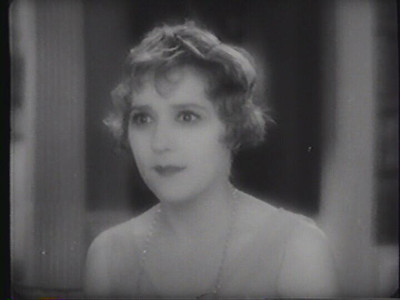
Again, Mary Pickford was almost twice the age of the character she was playing, and I guess she got it into her head that she had to exaggerate the youthful aspect of the character, and she really comes off annoying and fake. Remember, acting for silent films or for stage were different, and one had to be more subtle for sound films.
You know, here. Here's a seven-minute clip from the film to give you an idea of what I'm talking about:
"Ooh. Aren't they just.... adorable?"
The entire film is this. People standing in rooms, giving comically bad line readings and corny gestures. Mary Pickford is the queen of corny gestures.
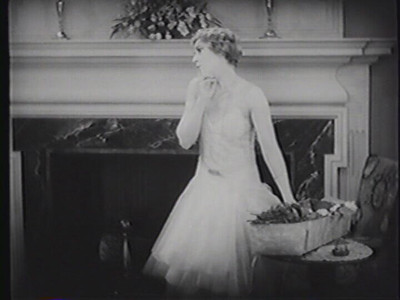

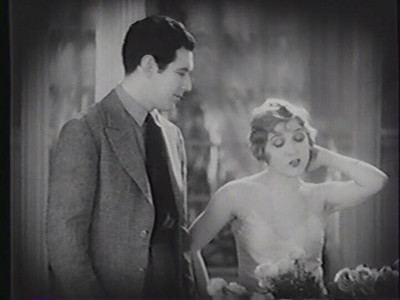
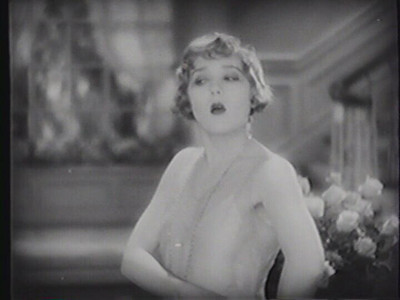
Coquette might as well be the flagship of the horrible films made at the beginning of the sound era. I should point out that I think Mary Pickford was a good silent actress, so it's not like she was untalented, but it's clear that sound was her undoing. The film was a critical failure and didn't make money, and Pickford quickly lost the fame she spent twenty years gaining. She only made two more films after this before retiring to the role of producer only.
But even with the troubles she had, I don't feel too forgiving. Her win in this category was pure politics. With sound destroying the industry and the Academy already patting itself on the back, it's clear just how dark of a time for movies it was.
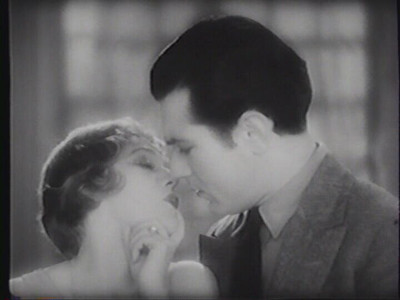
DIRECTED BY: Sam Taylor
STARRING: Mary Pickford, Johnny Mack Brown, Matt Moore
WON: Best Actress in a Leading Role (Mary Pickford)
I have to admit, I really miss the 1st Academy Awards. There was the questionable win and nomination here and there, but for the most part the films were interesting and deserved the accolades they received.
However, it took merely a year for the Academy to fall into controversy. That year, the award for Best Actress was expected to go to Ruth Chatterton for her role in Madame X (a film I sadly haven't been able to find). Instead, it went to Mary Pickford for Coquette. Why the controversy? Two reasons:
1) Mary Pickford was arguable the most powerful woman in Hollywood at the time. She began starring in movies in the 1910s, starring in 52 of them overall. Her youthful appearance and trademark curly hair made her on of the biggest stars of the silent era. Some say there was a point where she was more famous then Chaplin. Appearances in public were known to cause riots. One of her curls sold for $15,000 in auction. She was a superstar.
And she used that superstar status to change the film industry from the inside. She became her own producer after three years of starring in films. Pickford's films were distributed through their own distribution unit. In 1919, she founded her own studio, United Artists, along with Chaplin, director D.W. Griffith and soon-to-be husband Douglas Fairbanks Sr. The company became a much-needed home for independent film producers at the time.
And most importantly, she was one of the founders of the Academy of Motion Picture Arts and Sciences, the group behind the Academy Awards. She was the only female member at the time, and even if Pickford HAD given the best performance that year, people would still have cried favoritism.
2) Mary Pickford did not give the best performance that year. Coquette is an awful, awful film.
This film is the first all-talkie picture reviewed on this site. While The Jazz Singer had a synced soundtrack, actual dialogue was reduced to a few songs and one brief monologue. This film is wall-to-wall conversations, and since microphones weren't mobile at the time, that meant everyone had to stay in the same area with little movement.
See this chair?

The microphone is somewhere around that chair, so most of the movie is people awkwardly standing around the chair chatting. That chair gets more screen time then any of the actors.
The film takes place in some Southern state, where a rich doctor deals with her teenage daughter Norma (Pickford was in her 30s at the time) and the suitors that come to her door. Yes, for the third time in the 2nd Academy Awards, we're dealing with a Rich Person Melodrama. Anyway, Norma shows interest in a poor man from the mountains, and her father won't hear of it, and tries to hook Norma up with his dull rich friend. EXCITING!

Again, Mary Pickford was almost twice the age of the character she was playing, and I guess she got it into her head that she had to exaggerate the youthful aspect of the character, and she really comes off annoying and fake. Remember, acting for silent films or for stage were different, and one had to be more subtle for sound films.
You know, here. Here's a seven-minute clip from the film to give you an idea of what I'm talking about:
"Ooh. Aren't they just.... adorable?"
The entire film is this. People standing in rooms, giving comically bad line readings and corny gestures. Mary Pickford is the queen of corny gestures.




Coquette might as well be the flagship of the horrible films made at the beginning of the sound era. I should point out that I think Mary Pickford was a good silent actress, so it's not like she was untalented, but it's clear that sound was her undoing. The film was a critical failure and didn't make money, and Pickford quickly lost the fame she spent twenty years gaining. She only made two more films after this before retiring to the role of producer only.
But even with the troubles she had, I don't feel too forgiving. Her win in this category was pure politics. With sound destroying the industry and the Academy already patting itself on the back, it's clear just how dark of a time for movies it was.

Labels:
2nd Academy Awards,
Best Actress,
Mary Pickford
Tuesday, May 5, 2009
Legs and Our Dancing Daughters
Our Dancing Daughters (1928)
DIRECTED BY: Harry Beaumont
STARRING: Joan Crawford, Anita Page, Dorothy Sebastian
NOMINATED FOR: Best Cinematography (George Barnes)
Best Writing, Achievement (Josephine Lovett)
I find I have a bad habit of pretending I know something about culture and the history of culture. For some years I ran a pop culture website where I feign expertise on what people used to do and why they do it. However, I've come to realize I can't even grasp my own culture, which is completely different to the culture of ten years ago, which is different to the etc etc etc.
But if there's one thing I've learned, it's that in the 20s, it was all about the legs!
Our Dancing Daughters is a boring love story made in the heyday of the Jazz Age (the stupid white people jazz, not the awesome New Orleans jazz). It's not funny or exciting or emotional, it's just sleep inducing, and I see no real reason to return to it. However, it did bring to light something that I never realized. In the 20s, when a lustful man gazed at a woman, it was usually directed at her legs.
I'm not saying legs aren't still sexualized, but in these old films, they're the ONLY thing that's sexualized. As far as Hollywood was concerned, even pre-code Hollywood, breasts and other womanly curves just didn't exist. I have no idea why, really. I can assume it has something to do with the religious influence that was leading into the 50s, but I'm simply not qualified to say for certain. All I know is that Our Dancing Daughters is about sexuality, and sexuality is all about legs.
Our three main female character are all introduced BY their legs. First, Diana, a woman who takes a party girl persona in public, but inside is really romantic and wants to settle down:
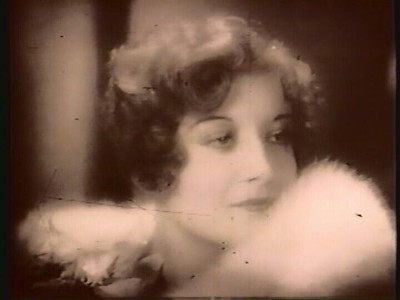
She's introduced in the movie as a pair of dancing legs in front of the mirror, getting ready for the big party.
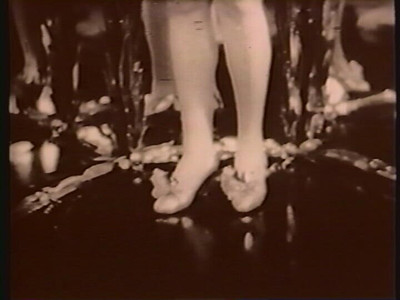
And then we have Beatrice, a woman who insists on not fooling around and really can't be bothered to party.

We meet here from behind, standing still as her overprotective parents give her a stern talking to.

And finally, we have Ann, a gold digger, a woman who's only interested in marrying a rich man for his money.
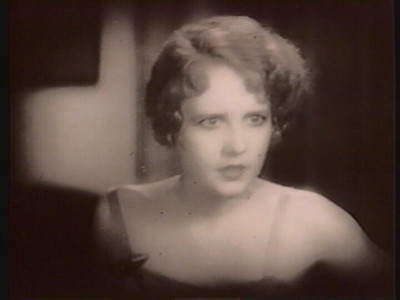
She only has interest in nice things, so when we meet her legs, we find her tearing and discarding some worn-out stockings.
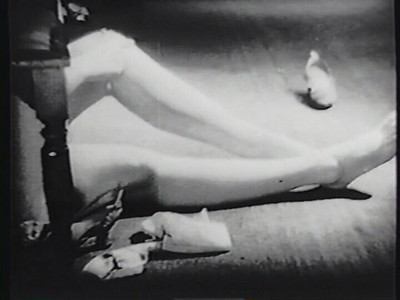
Our female characters are characterized by their legs, which proves that shallow characterization has been present as long as film's been around. It's like when female characters in modern day action movies are characterized by hair color and cup size. To pound this point home, Ben, the man for our characters to swoon over, is introduced LOOKING at legs.
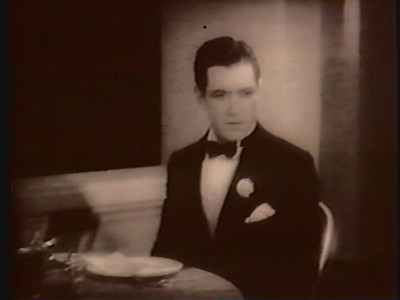
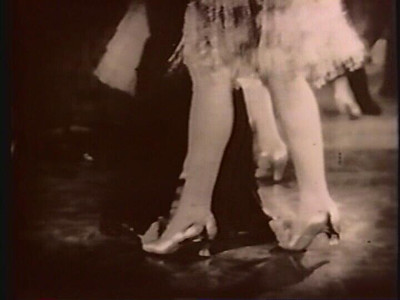
When people think back to the golden days of cinema, it's hard to imagine that there were shallow sexual films. What was "shallow" and "sexual" back in the 20s are alien to us now, and it makes trying to understand these times seem kinda futile.
If you're really interested in Our Dancing Daughters, you can find it on Youtube HERE.
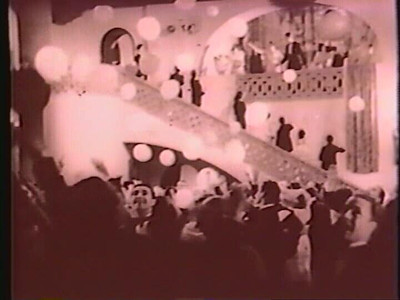
DIRECTED BY: Harry Beaumont
STARRING: Joan Crawford, Anita Page, Dorothy Sebastian
NOMINATED FOR: Best Cinematography (George Barnes)
Best Writing, Achievement (Josephine Lovett)
I find I have a bad habit of pretending I know something about culture and the history of culture. For some years I ran a pop culture website where I feign expertise on what people used to do and why they do it. However, I've come to realize I can't even grasp my own culture, which is completely different to the culture of ten years ago, which is different to the etc etc etc.
But if there's one thing I've learned, it's that in the 20s, it was all about the legs!
Our Dancing Daughters is a boring love story made in the heyday of the Jazz Age (the stupid white people jazz, not the awesome New Orleans jazz). It's not funny or exciting or emotional, it's just sleep inducing, and I see no real reason to return to it. However, it did bring to light something that I never realized. In the 20s, when a lustful man gazed at a woman, it was usually directed at her legs.
I'm not saying legs aren't still sexualized, but in these old films, they're the ONLY thing that's sexualized. As far as Hollywood was concerned, even pre-code Hollywood, breasts and other womanly curves just didn't exist. I have no idea why, really. I can assume it has something to do with the religious influence that was leading into the 50s, but I'm simply not qualified to say for certain. All I know is that Our Dancing Daughters is about sexuality, and sexuality is all about legs.
Our three main female character are all introduced BY their legs. First, Diana, a woman who takes a party girl persona in public, but inside is really romantic and wants to settle down:

She's introduced in the movie as a pair of dancing legs in front of the mirror, getting ready for the big party.

And then we have Beatrice, a woman who insists on not fooling around and really can't be bothered to party.

We meet here from behind, standing still as her overprotective parents give her a stern talking to.

And finally, we have Ann, a gold digger, a woman who's only interested in marrying a rich man for his money.

She only has interest in nice things, so when we meet her legs, we find her tearing and discarding some worn-out stockings.

Our female characters are characterized by their legs, which proves that shallow characterization has been present as long as film's been around. It's like when female characters in modern day action movies are characterized by hair color and cup size. To pound this point home, Ben, the man for our characters to swoon over, is introduced LOOKING at legs.


When people think back to the golden days of cinema, it's hard to imagine that there were shallow sexual films. What was "shallow" and "sexual" back in the 20s are alien to us now, and it makes trying to understand these times seem kinda futile.
If you're really interested in Our Dancing Daughters, you can find it on Youtube HERE.

Subscribe to:
Posts (Atom)